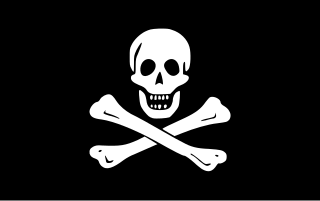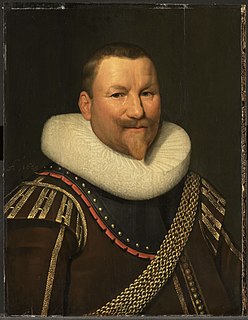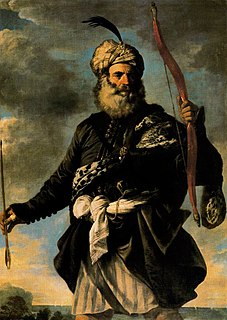
Piracy is an act of robbery or criminal violence by ship or boat-borne attackers upon another ship or a coastal area, typically with the goal of stealing cargo and other valuable goods. Those who conduct acts of piracy are called pirates, while the dedicated ships that pirates use are called pirate ships. The earliest documented instances of piracy were in the 14th century BC, when the Sea Peoples, a group of ocean raiders, attacked the ships of the Aegean and Mediterranean civilizations. Narrow channels which funnel shipping into predictable routes have long created opportunities for piracy, as well as for privateering and commerce raiding. Historic examples include the waters of Gibraltar, the Strait of Malacca, Madagascar, the Gulf of Aden, and the English Channel, whose geographic structures facilitated pirate attacks. Privateering uses similar methods to piracy, but the captain acts under orders of the state authorizing the capture of merchant ships belonging to an enemy nation, making it a legitimate form of war-like activity by non-state actors. A land-based parallel is the ambushing of travelers by bandits and brigands in highways and mountain passes.

Piet Pieterszoon Hein was a Dutch admiral and privateer for the Dutch Republic during the Eighty Years' War. Hein was the first and the last to capture a large part of a Spanish treasure fleet which transported huge amounts of gold and silver from Spanish America to Spain. The amount of silver taken was so big that it resulted in the rise of the price of silver worldwide and the near bankruptcy of Spain.
Peter Easton was a pirate in the early 17th century. The 'most famous English pirate of the day', his piracies ranged from Ireland and Guinea to Newfoundland. He is best known today for his involvement in the early English settlement of Newfoundland, including the settlements at Harbour Grace and Ferryland from 1611 to 1614. One of the most successful of all pirates, he controlled such seapower that no sovereign or state could afford to ignore him, and he was never overtaken or captured by any fleet commissioned to hunt him down. However, he is not as well known as some of the pirates from the late 17th and early 18th centuries.

The Barbary pirates, or Barbary corsairs or Ottoman corsairs, were Muslim pirates and privateers who operated from North Africa, based primarily in the ports of Salé, Rabat, Algiers, Tunis, and Tripoli. This area was known in Europe as the Barbary Coast, in reference to the Berbers. Their predation extended throughout the Mediterranean, south along West Africa's Atlantic seaboard and into the North Atlantic as far north as Iceland, but they primarily operated in the western Mediterranean. In addition to seizing merchant ships, they engaged in Razzias, raids on European coastal towns and villages, mainly in Italy, France, Spain, and Portugal, but also in the British Isles, the Netherlands, and Iceland. The main purpose of their attacks was to capture slaves for the Ottoman slave trade as well as the general Arab slavery market in North Africa and the Middle East. Slaves in Barbary could be of many ethnicities, and of many different religions, such as Christian, Jewish, or Muslim.
Murat Reis the Elder was an Ottoman privateer and admiral, who served in the Ottoman Navy. He is regarded as one of the most important Barbary corsairs.
John Ward or Birdy, also known as Jack Ward or later as Yusuf Reis, was an English-Ottoman pirate who later converted to Islam and became a Barbary Corsair for the Ottoman Caliphate operating out of Tunis during the early 17th century.
Zheng Zhilong, Marquis of Tong'an and Nan'an, baptismal name Nicholas Iquan Gaspard, based on Hokkien childhood nickname It-Kuan (一官; It-Kuan, was a Chinese admiral, merchant, military general, pirate, and politician during the late Ming and early Qing dynasties. who later defected to the Qing dynasty. He was from Nan'an County in Fujian province of China. He was the father of Koxinga, Prince of Yanping, the founder of the pro-Ming Kingdom of Tungning in Taiwan, and as such an ancestor of the House of Koxinga. After his defection, he was given noble titles by the Qing government, but was eventually executed because of his son's continued resistance against the Qing regime.

The Golden Age of Piracy is a common designation for the period between the 1650s and the 1730s, when maritime piracy was a significant factor in the histories of the Caribbean, the United Kingdom, the Indian Ocean, North America, and West Africa.

Jan Janszoon van Haarlem, commonly known as Reis Mourad the Younger, was an Ottoman Dutch pirate in Algeria and Morocco who converted to Islam after being captured by a Moorish state in 1618. He began serving as a pirate, one of the most famous of the 17th-century "Salé Rovers". Together with other corsairs, he helped establish the independent Republic of Salé at the city of that name, serving as the first President and Grand Admiral. He also served as Governor of Oualidia.

The Turkish Abductions were a series of slave raids by pirates from Northwest Africa that took place in Iceland in the summer of 1627.
Ivan Dirkie de Veenboer was a 17th-century Dutch corsair. A privateer during the Eighty Years' War, he later turned to piracy and became an officer under Simon the Dancer. He later converted to Islam, becoming known as Süleyman Reis, and had a highly successful career as an Ottoman captain and Barbary corsair commanding the Algiers corsair fleet during his later years.
Siemen Danziger, better known by his anglicized names Zymen Danseker and Simon de Danser, was a 17th-century Dutch privateer and corsair. His name is also written Danziker, Dansker, or Danser.
The Battle of Liaoluo Bay took place in 1633 off the coast of Fujian, China; involving the Dutch East India Company (VOC) and the Chinese Ming dynasty's navies. The battle was fought at the crescent-shaped Liaoluo Bay that forms the southern coast of the island of Kinmen. A Dutch fleet under Admiral Hans Putmans was attempting to control shipping in the Taiwan Strait, while the southern Fujian sea traffic and trade was protected by a fleet under Brigadier General Zheng Zhilong. This was the largest naval encounter between Chinese and European forces before the Opium Wars two hundred years later.

Adm. Hendrick Corneliszoon Lonck, a Dutch naval hero, was the first Dutch sea captain to reach the New World.

The Salé Rovers, also Sale Rovers or Salle Rovers, were a dreaded band of Barbary corsairs in the 17th century. They formed the Republic of Salé on the Moroccan coast. The most famous of the rovers was Jan Janszoon, a Dutchman who had been a pirate for Holland in the Mediterranean. He "turned Turk" after being captured by one of the Moorish states in 1618 and became known as Admiral Murat Reis.
This timeline of the history of piracy in the 1610s is a chronological list of key events involving pirates between 1610 and 1619.
Jewish pirates were those seafaring Jewish people who engaged in piracy. While there is some mention of the phenomenon in antiquity, especially during the Hasmonean period, most Jewish pirates were Sephardim who operated in the years following the Alhambra Decree ordering the expulsion of Iberia's Jews. Upon fleeing Spain and Portugal, some of these Jews became pirates and turned to attacking the Catholic Empire's shipping as both Barbary corsairs from their refuge in the Ottoman dominions, as well as privateers bearing letters of marque from Spanish rivals such as the United Netherlands.
Yu Zigao was a Chinese admiral. He was responsible for forcing the Dutch to leave Penghu Island. While he enriched himself by way of an association with one notorious pirate, Li Dan, his position came under pressure because of another pirate, Li Dan's protégé, Zheng Zhilong.

Michel le Basque was a pirate and flibustier from the Kingdom of Navarre in the southwest of France. He is best known as a companion of François L'Olonnais, with whom he sacked Maracaibo and Gibraltar.
This timeline of the history of piracy in the 1600s is a chronological list of key events involving pirates between 1600 and 1609.








